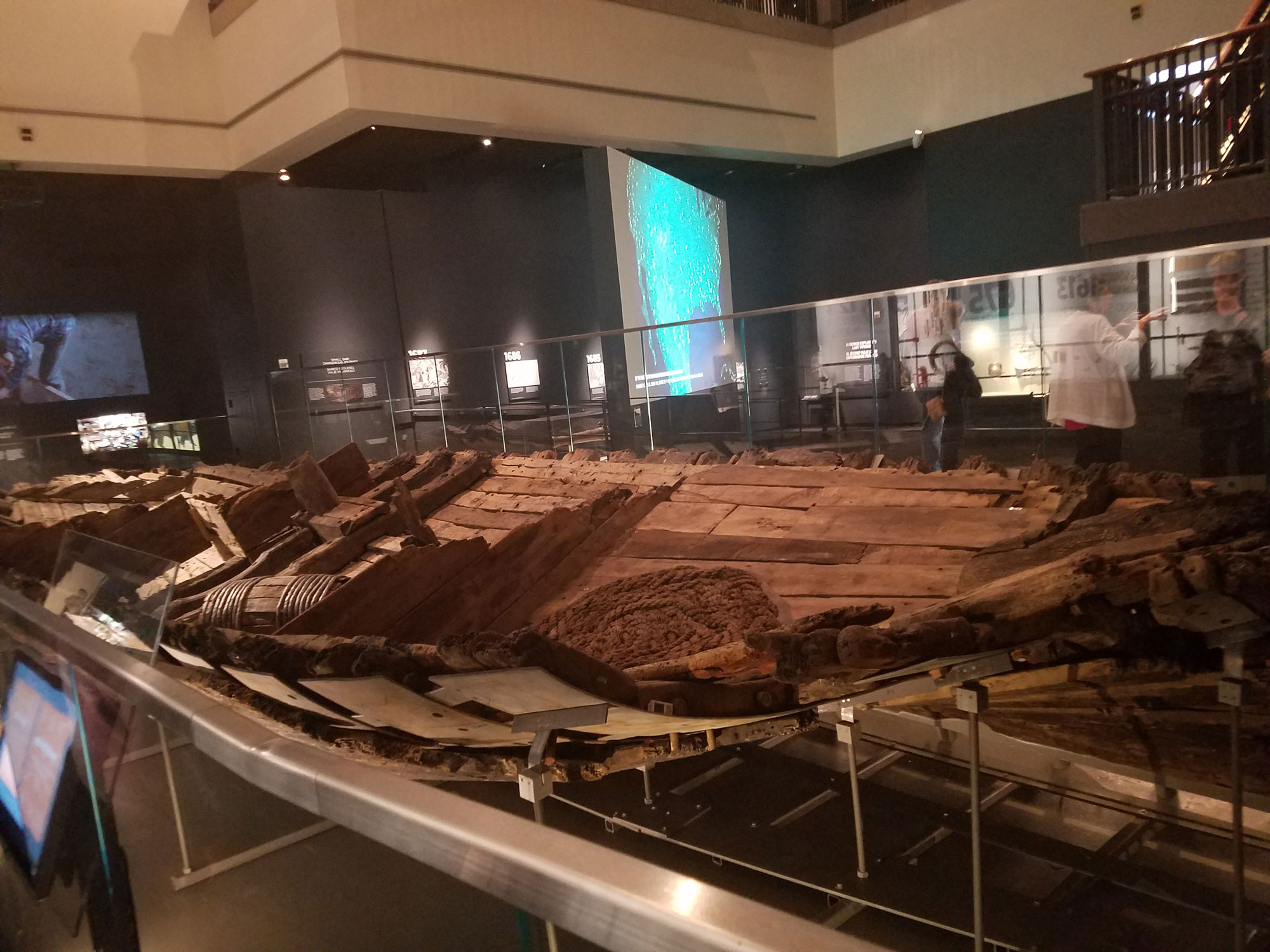French cannons buried by the Spanish in 1689 were uncovered on a private ranch in Victoria County by archeologists from the Texas Historical Commission. This finding finally confirmed the lost site of Fort St. Louis.
The Tragic Story of La Belle and Fort St. Louis
Robert Cavelier Sieur de La Salle had an ambitious plan to establish a colony at the mouth of the Mississippi River in order to maintain France’s hold on its Louisiana Territory and invade Spanish silver mines in what is now northern Mexico.
With support from Louis XIV, La Salle led an expedition to the New World, but he failed to locate the Mississippi and landed 400 miles away in Matagorda Bay. Thinking he was close, La Salle established Fort St. Louis on the west bank of Garcitas Creek in 1685.
But life at the colony was difficult and grim. After their supply ship La Belle sank in a violent storm, the colony tried to survive solely from the bounty of the unknown land. From 150 original inhabitants, the group dwindled to 40 by January 1687. La Salle then tried, along with 17 of the fort’s men, to hike to distant French forts in the Great Lakes region. The trek resulted in more tragedy, including La Salle’s mutiny and assassination.
Left at Fort St. Louis to fend for themselves, 20 people, including women and children, eked out an existence until Karankawa Indians attacked them in the winter of 1688-89. When the Spanish found the fort in 1689, they discovered and buried three French colonists killed by Indians. In 1722, Spain built a presidio directly over the remains of the French fort.
Capturing a Critical Point in History
We can trace much of our Hispanic heritage to Spain’s reaction to the French incursion into Texas (New Spain) and La Salle’s permanent settlement near present-day Victoria. Like the imperial conflicts between France and Spain, there were early and significant cultural interactions between Karankawa and Caddo Indians and these two European nations attempting to establish a permanent presence in Native American lands. La Belle and Fort St. Louis are emblematic of a unique chapter in North American history where these complex encounters came into play.
A Discovery for the Ages
Entombed for over 300 years, the discovery and excavation of La Belle attracted the world’s attention. The remains of the last ship in La Salle’s ill-fated convoy to the New World became one of the most important archeological projects in North America. Coverage appeared in Smithsonian, National Geographic, The New York Times, Le Monde, The London Times, Texas Highways, and other publications around the globe.
One of the most significant shipwrecks ever discovered in North America, La Belle’s hold was full of the cargo transported to the New World to support the fledgling colony. Archeologists came from as far away as China to view the excavations and witness daily revelations of a maritime explorer’s life in the 17th century.
Archeologists from the Texas Historical Commission made several exciting discoveries and unearthed tens of thousands of artifacts, including cannons, musket balls, gunflints, pottery, coins, hand-blown wine bottles, and more. Thousands of visitors came to watch the recovery or see exhibits of the treasures salvaged from the bottom of Matagorda Bay.
The discovery, excavation, and conservation of this beautiful ship, funded by private donations to the FTHC, changed the face of Texas archeology forever.
Pushing History Forward
La Belle changed the course of history for Texas, America, and the world. She helps us understand the larger context of the present in world history, represents the impact of French heritage in North America, and exemplifies the conflicts and cultural exchanges of the period.
Many are unaware that the first European colony in Texas was French—not Spanish. The discovery and preservation of Fort St. Louis, found and excavated shortly after the ship, shape our cultural legacy.
The story of La Belle is one of the most exciting chapters in our history and represents the leading edge of modern science and conservation efforts. It’s not only a time capsule of 17th-century French colonial expansion but is an ongoing case study in how we preserve and understand the evidence of the past.
La Belle Now
La Belle is listed in the marine archives in Rochefort as part of Louis XIV’s fleet, and thus, in accord with international maritime law, is an official French naval vessel. The treaty signed by the U.S. Department of State, France, and Texas allows the ship and artifacts to remain in America. Still, we coordinate regularly and collegially with authorities at the Musée National de la Marine in Paris.
In 2013, the most crucial artifact—La Belle herself—was presented to the public for the first time in 300 years. After years of conservation, the Texas Historical Commission, The Friends of the Texas Historical Commission, and the Bob Bullock Texas State History Museum joined forces to install the La Belle in her final resting place on the main floor of the Museum. There she sits surrounded by a magnificent array of French Colonial artifacts recovered from the wreck of La Salle’s ship, La Belle, and Fort St. Louis, the first permanent European colony in our state. Artifacts on display include a bronze cannon, glass beads, brass cooking utensils, metal hawk bells, pottery, weapons, wine bottles in various shapes, and even the skeleton of a crew member found on the ship.
Read more about La Belle in From a Watery Grave: The Discovery and Excavation of La Salle’s Shipwreck, La Belle by Dr. Jim Bruseth and Toni Turner.
